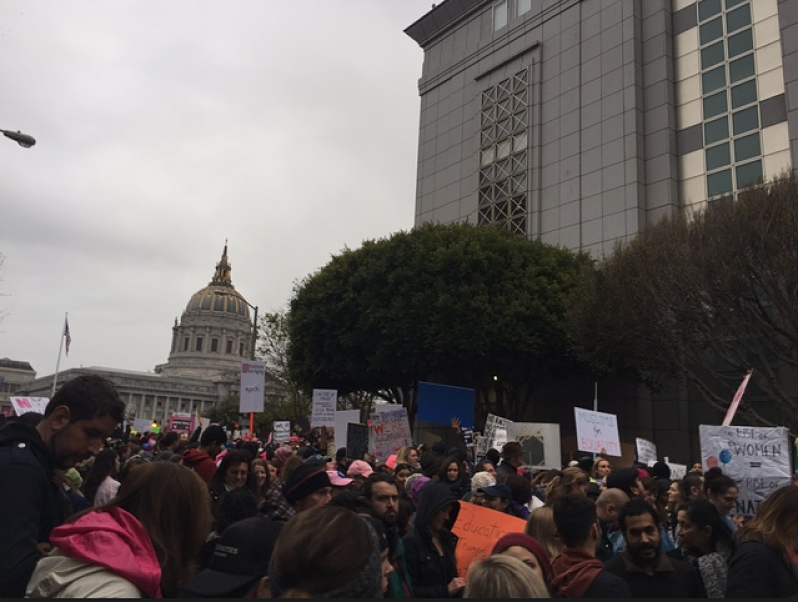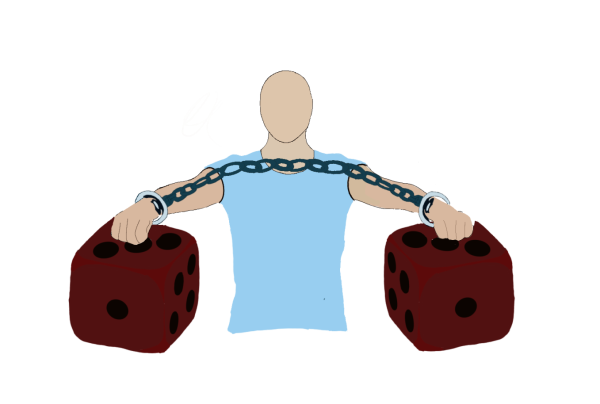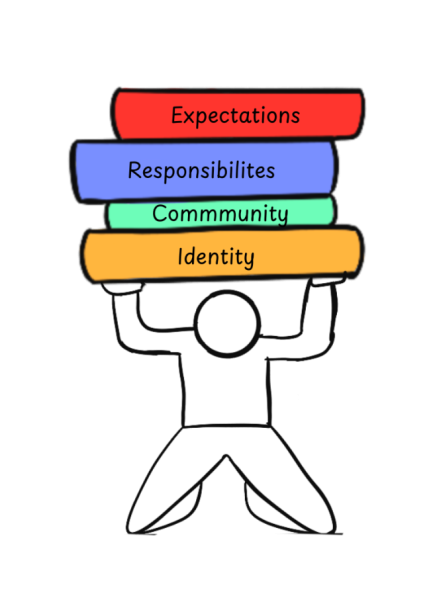The Hart of the Matter: Marching towards progress
Photo by Lily Hartenstein
It has been almost 365 days into the Trump presidency, and it would be a fair statement to summarize the previous year as absurd and disheartening.
However, it is also almost the one-year anniversary for the Women’s March.
As the second Women’s March nears, its value has come into question. The gathering of people to chant with signs is not necessarily the peak of modern reform, but there is an importance to the march.
Last year, the march took place on the first full day of Trump’s presidency to create a statement that not everyone in the United States aligns with the values in the White House. It was likely the largest organized protest in United States history, according to the Washington Post.
One of the most damaging aspects of Trump’s presidency is that his disrespectful, unprofessional and impulsive and behavior is normalized, paving the way for the same behavior to continue in politics. Take the example of the Greg Ginaforte, a Republican who ran for a congressional seat in Montana. According to the Washington Post, Ginaforte grabbed a reporter from The Guardian by the neck, slammed him to the ground and punched him repeatedly. Ginaforte won the election the next day.
The Women’s March is the anti-Trump; it is a march for everything he is against, a reminder that not everyone accepts his bigotry.
When I attended the protest last year, there was an air of community. I met hundreds of people throughout the march, coming up with chants and discussing politics and the weather along the way. Every single person I talked to was holding a different sign for a different cause, but each person was friendly and positive. It was a breath of fresh air after the general hostility that followed the 2016 election.
The march was integral in building positivity and community, showing the world that Trump was not America. And, sure, it’s one thing to say that something is supportive and encouraging, and another to suggest it actually makes a difference.
The Women’s March organization did make a difference, by channeling the energy created by the five million people across the world who attended a march into legitimate change.
The organization gained a significant following after the marches across the world occurred, and used this influence to promote a campaign called “10 Actions for the First 100 Days.” This campaign encouraged people to send postcards to their representatives about issues that they care about, introducing the concept of contacting representatives to many unaware of such an act.
Since the “10 Actions” campaign , groups with the focus of helping the average citizen send their representatives messages have become more and more popular. There are numbers to text and websites to use to make the process as easy as possible, such as ResistBot or contactingcongress.org.
The Women’s March organization also created initiatives like Empower, which is dedicated to offering resources in order for youth to build groups that benefit their communities. They also started Power to the Polls, a voter registration tour. These initiatives have gained momentum through the popularity of the march.
The Women’s March is a collection of people across the country coming together for a day to juxtapose the bigotry in the White House and inspire everyday people to participate in government. It may not have an obvious major impact, but it is an accessible action to take, with many positive effects.









LilyLover • Jan 17, 2018 at 7:30 pm
YESSSSSSSS LILY MY QUEEN!!! I LIVE FOR YOUR COLUMNS THEY ARE GODLY